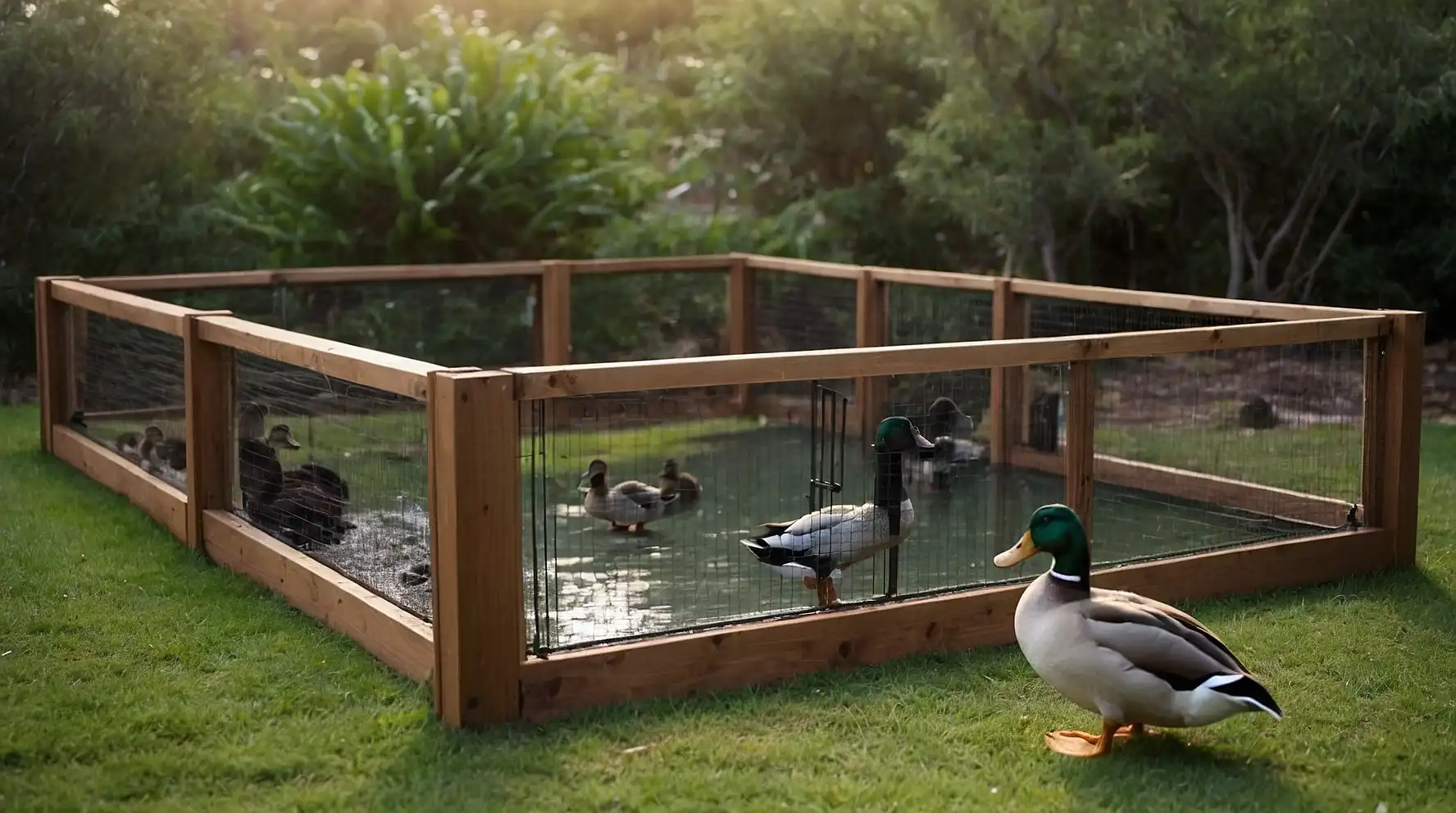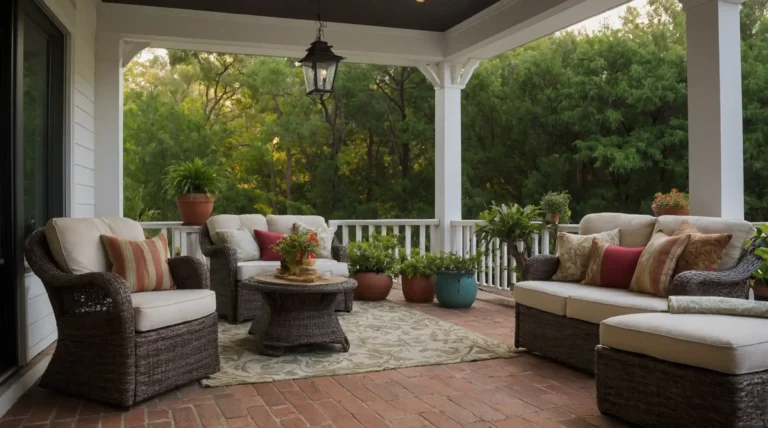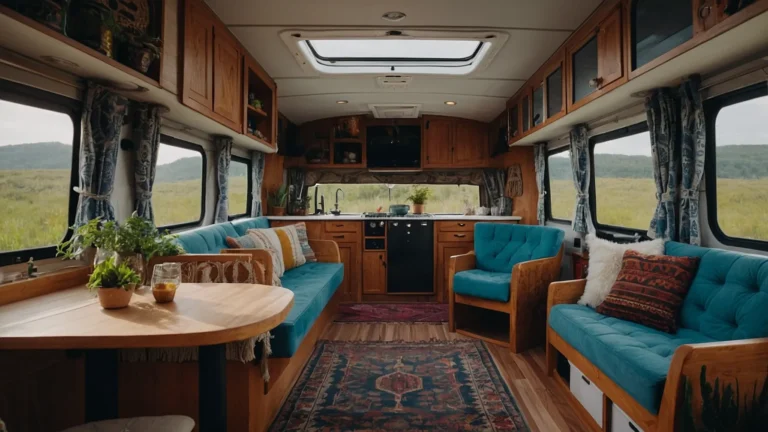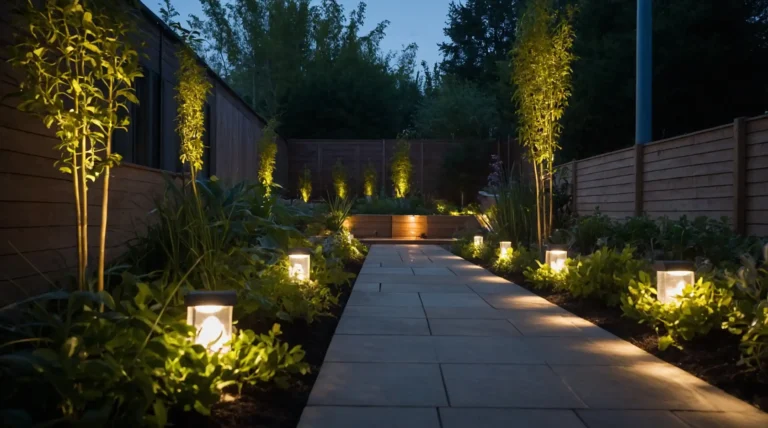27 Best DIY Duck Enclosure Ideas
Building the perfect duck enclosure doesn’t have to break your budget or require professional construction skills.
You can create a safe, comfortable home for your feathered friends with creativity and basic materials.
Whether you’re a beginner or experienced duck keeper, these DIY ideas will help you design an enclosure that keeps your ducks happy and secure.
From simple weekend projects to more elaborate setups, you’ll find options that match your skill level.
These enclosure ideas focus on protection from predators, proper drainage, and easy maintenance.
Your ducks deserve a space where they can thrive naturally while staying safe from harm.
1: Basic Wire Fencing Enclosure

Start with a simple rectangular frame using wooden posts and chicken wire. This budget-friendly option provides basic protection while allowing your ducks plenty of visibility.
Dig posts at least two feet deep for stability. Stretch the wire tightly between posts to prevent sagging.
Add a gate using hinges and a secure latch. This design works well for temporary or seasonal duck keeping.
2: Converted Dog Kennel Run

Transform a large dog kennel into a duck paradise by adding a roof and proper flooring. The existing framework saves you time and provides sturdy construction.
Cover the top with corrugated roofing material for weather protection. Add hardware cloth along the bottom to prevent digging predators.
Install a small door for easy access. This solution works perfectly for smaller duck flocks.
3: Pallet Wood Enclosure
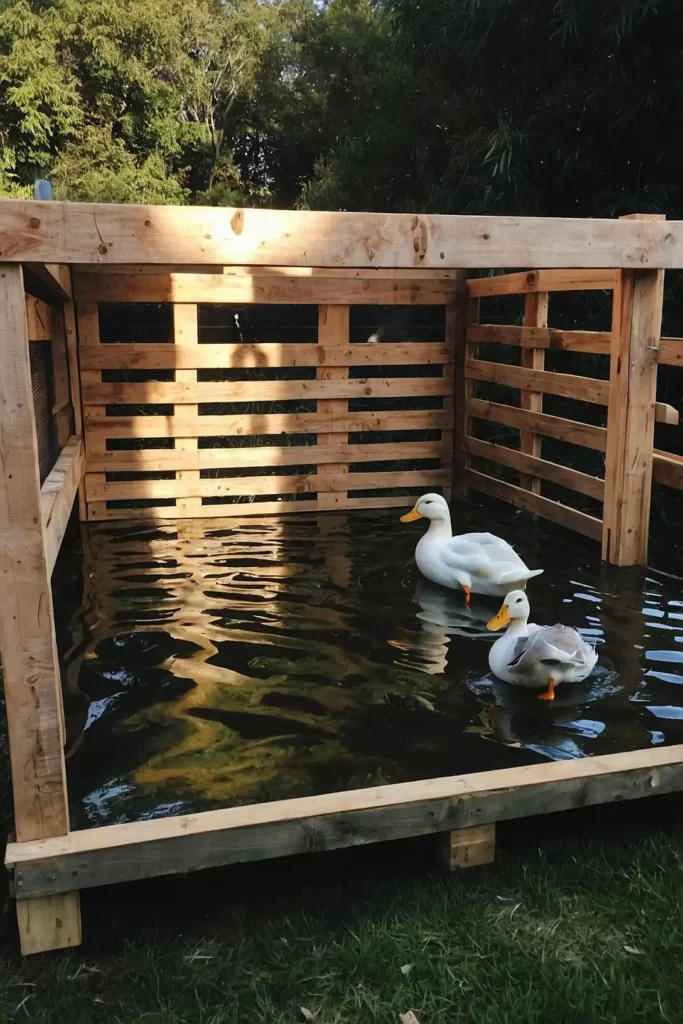
Repurpose wooden pallets to create an eco-friendly duck enclosure that costs almost nothing. Stack and secure pallets to form walls of your desired height.
Fill gaps with chicken wire or hardware cloth for complete coverage. The natural wood appearance blends beautifully with garden settings.
Add a hinged pallet door for convenient entry. Sand rough edges to prevent injury to both you and your ducks.
4: PVC Pipe Framework

Build a lightweight, movable enclosure using PVC pipes and connectors. This design allows you to relocate your ducks easily for fresh grazing areas.
Cover the frame with poultry netting or hardware cloth. The white pipes reflect heat, keeping the interior cooler during summer months.
Create removable panels for cleaning access. This option works excellently for temporary or rotational grazing systems.
5: Greenhouse Conversion
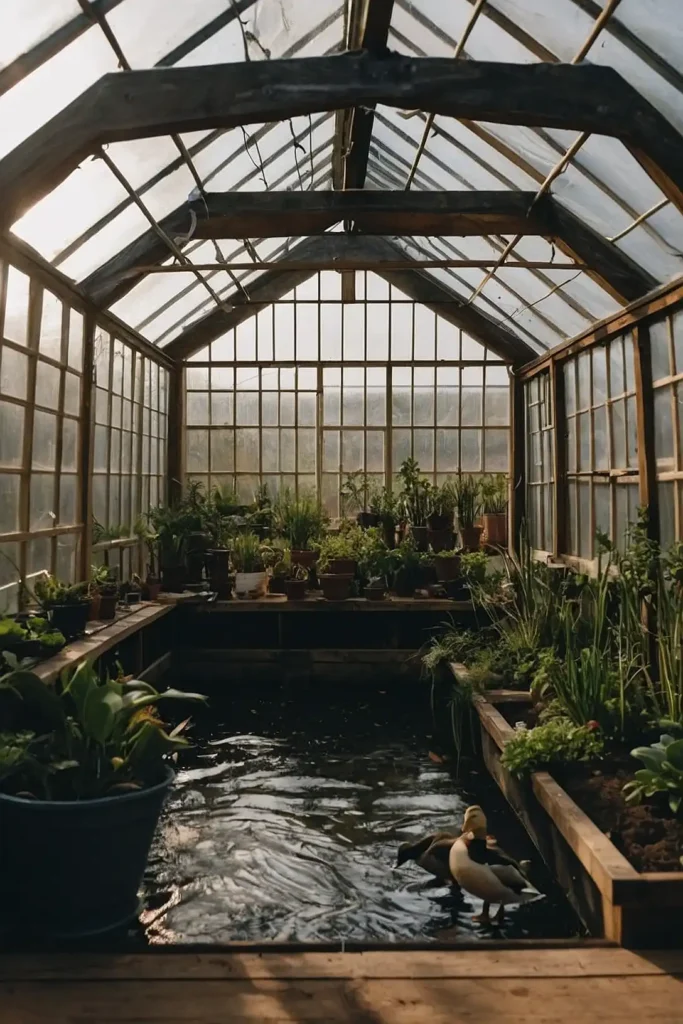
Convert an old greenhouse into a luxurious duck enclosure with natural lighting and weather protection. Replace glass panels with hardware cloth for ventilation.
Maintain the original door for easy human access. The existing structure provides excellent protection from wind and rain.
Add roosting areas and nesting boxes inside. Your ducks will enjoy this climate-controlled environment year-round.
6: Chicken Tractor Style

Build a portable enclosure that you can move around your property for fresh grass access. Use lightweight materials like aluminum or PVC for easy transportation.
Include wheels on one end for effortless moving. This design prevents overgrazing while providing natural foraging opportunities.
Add a covered section for shade and weather protection. Your ducks will appreciate the variety of environments.
7: Pond-Integrated Design
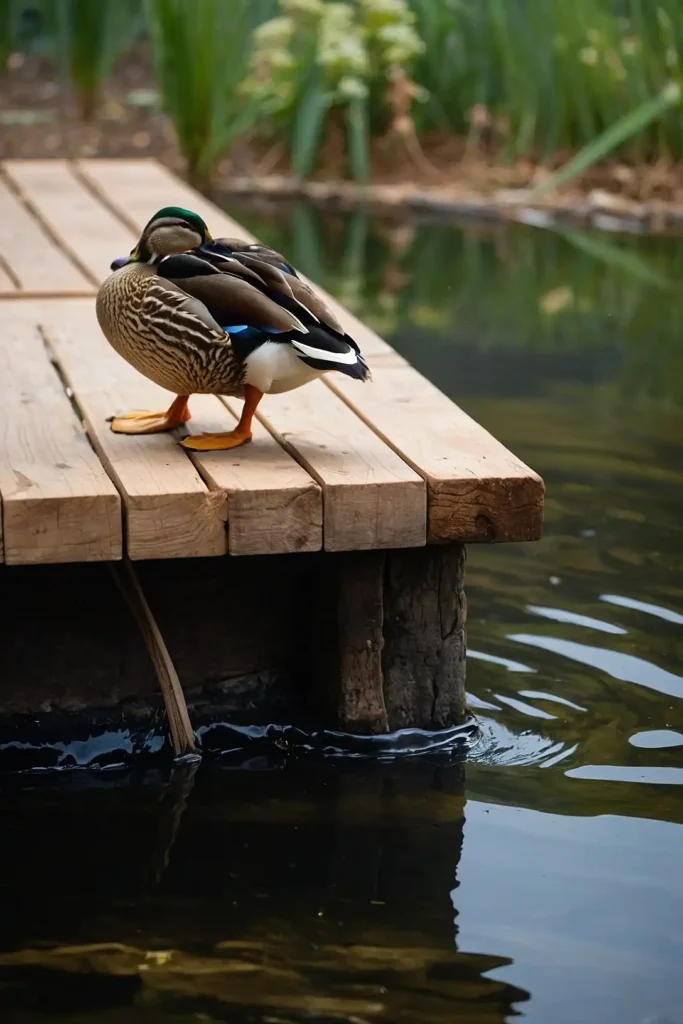
Incorporate a small pond or water feature directly into your enclosure design. Ducks need water for drinking, bathing, and natural behaviors.
Use a rubber liner or pre-formed pond insert for the water feature. Surround it with sloped gravel for easy access.
Install a drain system for easy cleaning. This setup creates a more natural environment for your waterfowl.
8: Two-Story Duck Coop

Maximize your space by building vertically with a two-level enclosure system. The upper level serves as a sleeping and nesting area.
Build stairs or a ramp for easy duck access between levels. The lower area provides daytime foraging and exercise space.
Use the space under the upper level for storage. This efficient design works well in smaller yards.
9: Underground Predator Barrier
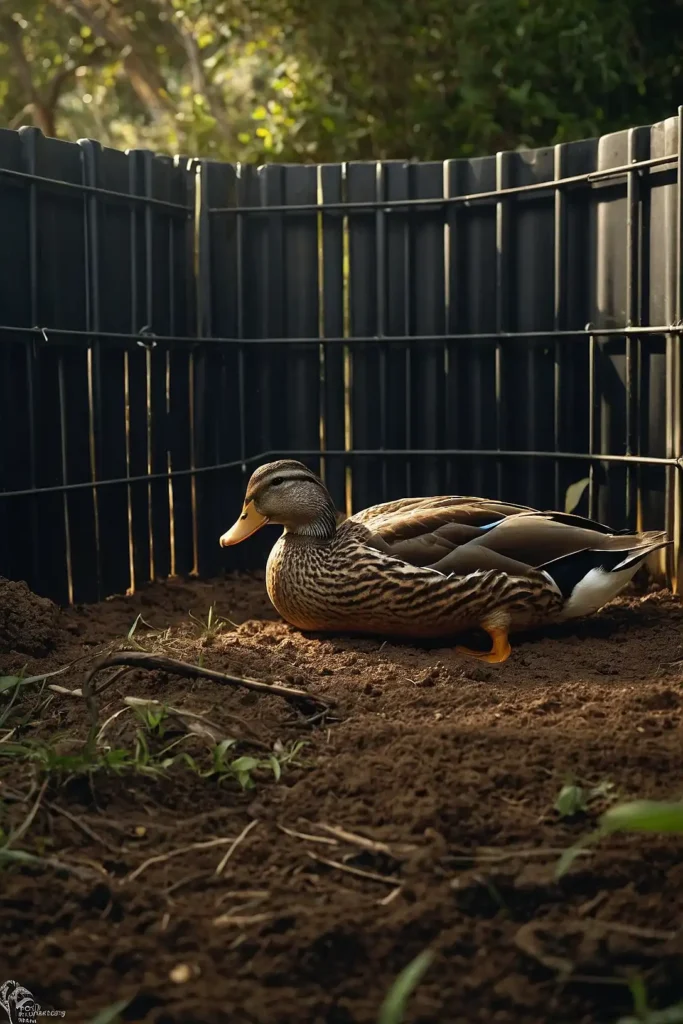
Dig a trench around your enclosure perimeter and bury hardware cloth to prevent digging predators. This invisible protection system ensures maximum security.
Extend the buried mesh at least 12 inches deep and 6 inches outward. Backfill with soil and tamp down firmly.
Add gravel around the perimeter for drainage. This method stops foxes, raccoons, and other digging threats.
10: Lean-To Shelter Design
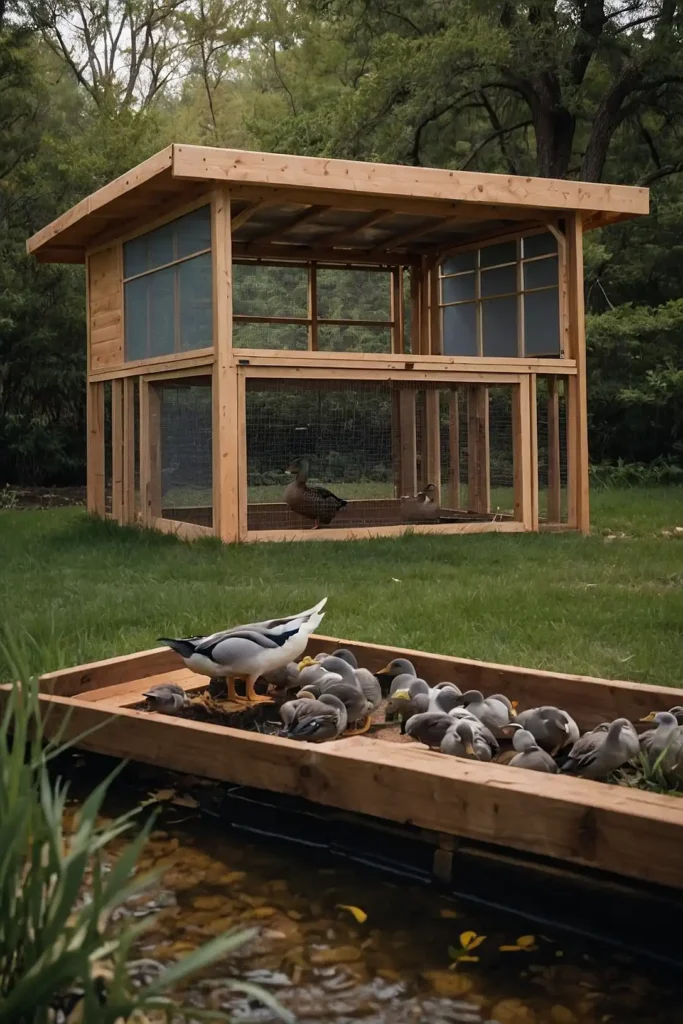
Attach a simple lean-to structure against an existing building for easy construction and weather protection. This design uses your house or garage wall as one side.
Install a slanted roof for proper water runoff. Use corrugated metal or shingles for durable roofing material.
Add removable panels for seasonal adjustments. Your ducks get shelter while you save on materials and labor.
11: Hexagonal Enclosure
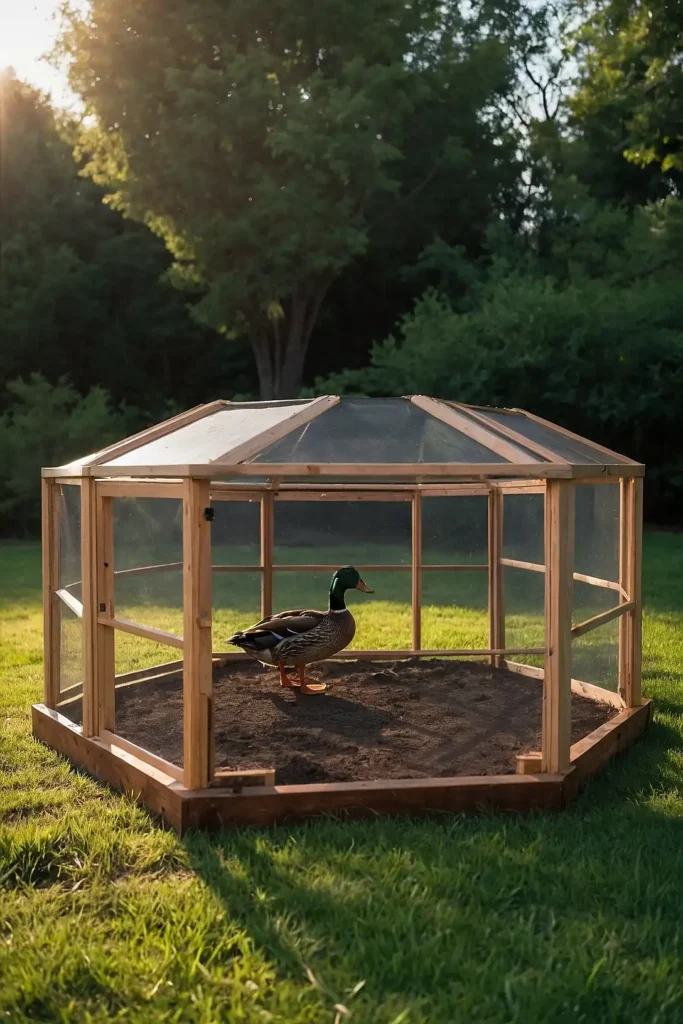
Create an attractive six-sided enclosure that provides more space than traditional rectangular designs. The angular shape adds visual interest to your yard.
Use equal-length panels for each side to maintain symmetry. This geometry maximizes interior space while minimizing perimeter materials.
Install the gate on one of the flat sides. The unique shape creates natural corners for nesting areas.
12: Raised Platform System
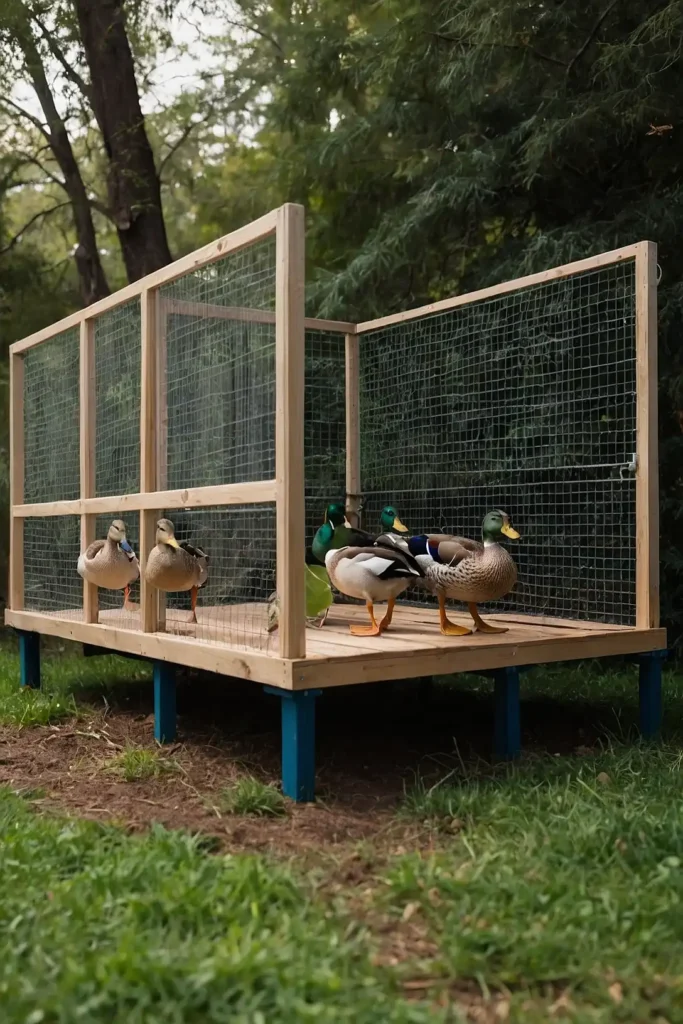
Elevate your enclosure on a platform to improve drainage and prevent mud problems. This design keeps your ducks clean and healthy year-round.
Build the platform using pressure-treated lumber and hardware cloth flooring. The elevation allows air circulation underneath.
Add a ramp for easy duck access. Debris falls through the floor, making cleaning much easier.
13: Bamboo Screen Enclosure

Use bamboo screening materials for an attractive, natural-looking enclosure that blends with garden landscapes. This renewable material provides privacy and wind protection.
Attach screens to wooden posts using zip ties or staples. The natural color and texture complement outdoor environments perfectly.
Add bamboo gates using simple hinges. This eco-friendly option creates a tropical, resort-like appearance.
14: Recycled Window Frames

Repurpose old windows to create an enclosed run with plenty of natural light. Remove the glass and replace with hardware cloth for safety.
Hinge several windows together to form movable panels. The existing frames provide sturdy mounting points for hardware cloth.
Use window latches for secure closure. This upcycling project gives new life to architectural salvage materials.
15: Geodesic Dome Design

Build a striking dome-shaped enclosure using PVC pipes and specialized connectors. This unique structure provides maximum interior space with minimal materials.
Cover with bird netting or poultry mesh for protection. The curved shape naturally sheds rain and snow effectively.
Add a door panel that follows the dome’s curvature. Your ducks will love this spacious, cathedral-like environment.
16: Modular Panel System
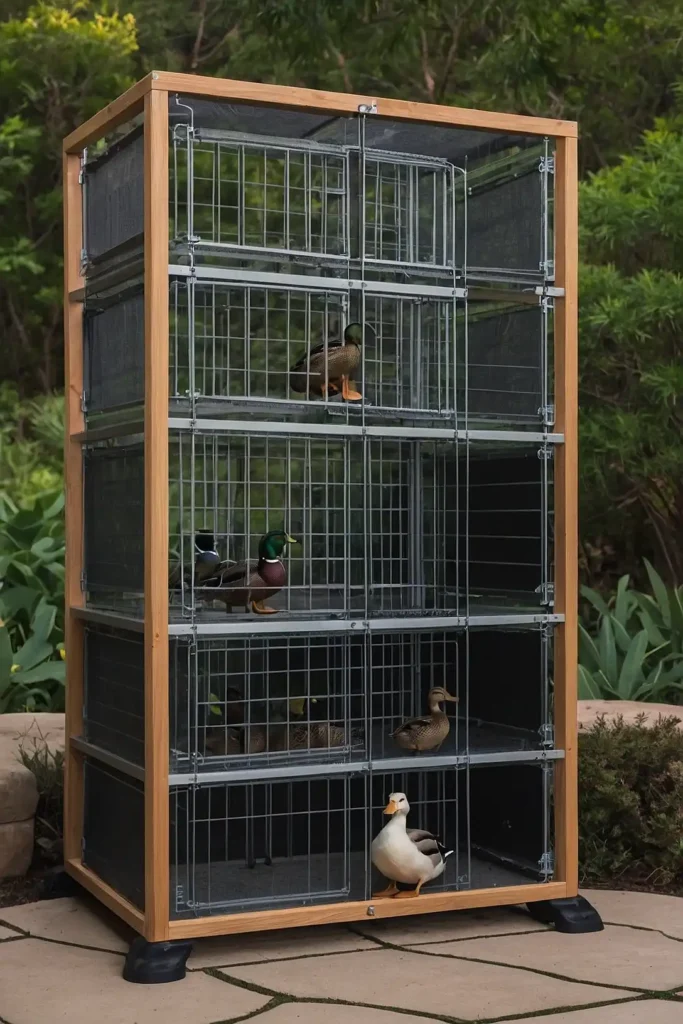
Create an expandable enclosure using standardized panels that connect together. This flexible design grows with your flock size.
Build identical rectangular frames with hardware cloth centers. Use hinges or clips to connect panels at any angle.
Store extra panels for future expansion. You can reconfigure the shape anytime to fit your space.
17: Earth-Sheltered Design

Partially bury your enclosure into a hillside for natural insulation and protection. This underground approach maintains comfortable temperatures year-round.
Excavate into a slope and build retaining walls. The earth provides excellent thermal mass and wind protection.
Install proper drainage to prevent water accumulation. Your ducks stay warmer in winter and cooler in summer.
18: Floating Dock Enclosure

Build an enclosure on a floating dock for ducks with access to natural water bodies. This design allows ducks to swim while staying contained.
Use foam-filled dock floats for buoyancy and stability. Attach fencing materials to the floating platform edges.
Include a ramp for easy land access. This unique setup combines swimming opportunities with security.
19: Greenhouse Tunnel Style
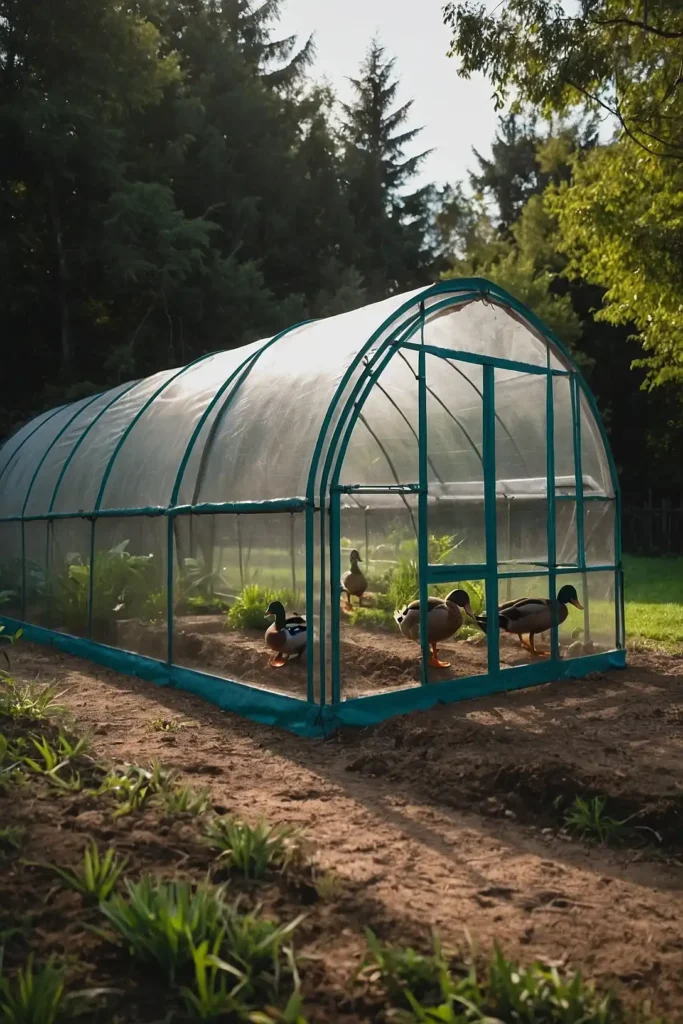
Construct a long, tunnel-shaped enclosure using greenhouse hoops and poultry netting. This design provides excellent height for both you and your ducks.
Bend cattle panels or PVC pipes into arch shapes. Cover with bird netting and secure to ground anchors.
Add doors at both ends for cross-ventilation. The tunnel shape creates a spacious, airy environment.
20: Perimeter Electric Fence

Install a low-voltage electric fence around a larger area for predator deterrence. This invisible barrier protects without blocking views.
Run wire at multiple heights to deter various predator sizes. Solar chargers provide power in remote locations.
Combine with traditional fencing for complete protection. The electric shock trains predators to avoid your property.
21: Rock and Wire Design
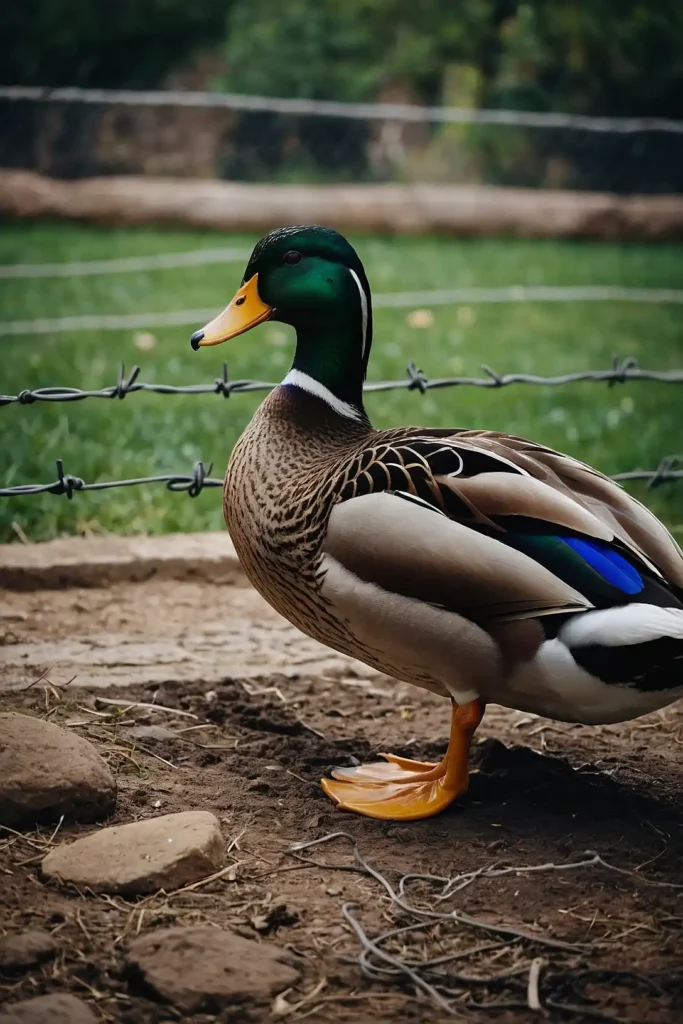
Incorporate natural stone elements with wire fencing for an attractive, permanent installation. Large rocks provide visual weight and shelter opportunities.
Stack stones to create partial walls and wind breaks. Fill gaps between rocks with hardware cloth for security.
Use natural materials that complement your landscape. This design ages beautifully and requires minimal maintenance.
22: Sunken Garden Style
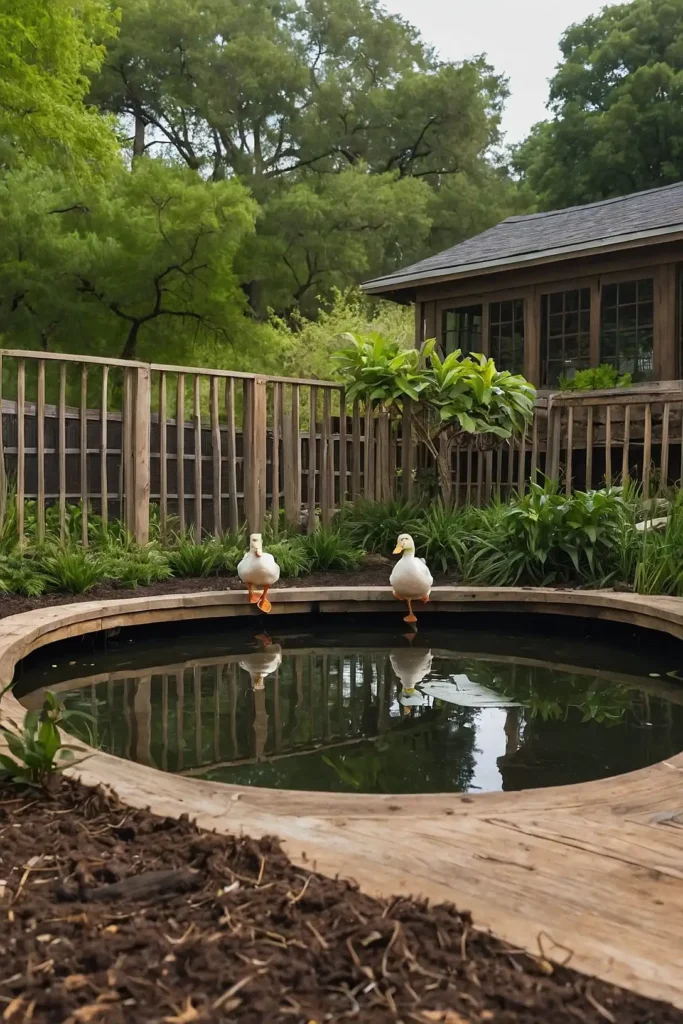
Excavate a shallow depression and build low walls around the perimeter. This design creates a natural amphitheater effect for your ducks.
Install drainage systems to prevent water accumulation during heavy rains. The lowered floor provides wind protection naturally.
Add steps for easy human access. Your ducks enjoy a protected microclimate in this sheltered environment.
23: Living Fence Integration
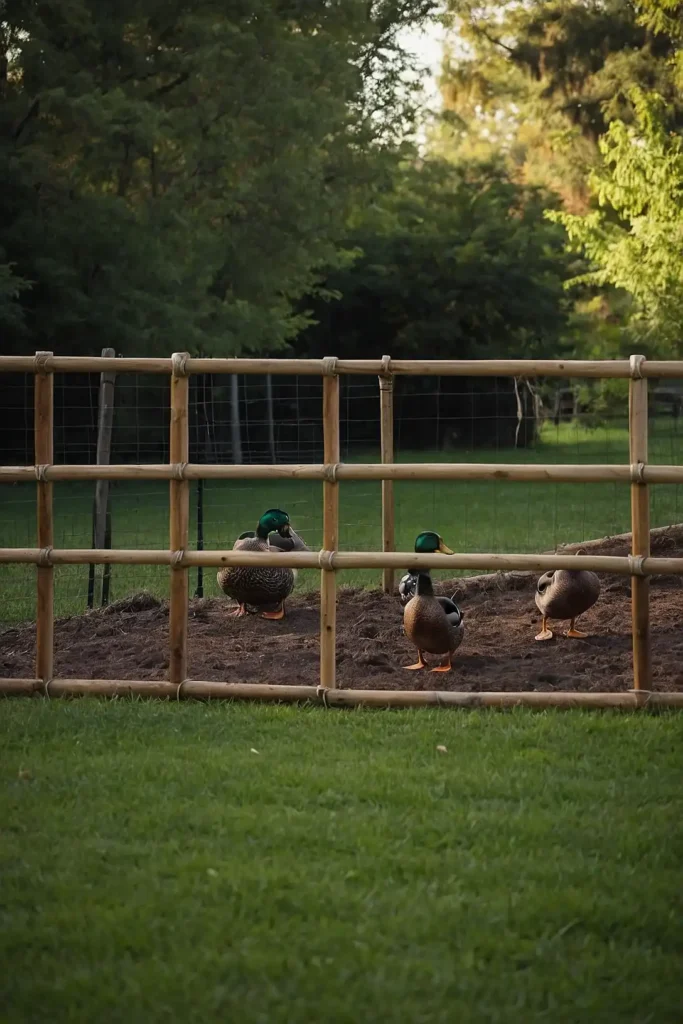
Plant fast-growing shrubs or hedges as natural enclosure walls combined with wire fencing. This green approach provides beauty and function.
Choose duck-safe plants that grow quickly and densely. Weave wire fencing through branches for reinforcement.
Maintain regular pruning for proper growth. The living walls provide shade, shelter, and natural foraging opportunities.
24: Mobile Shed Conversion
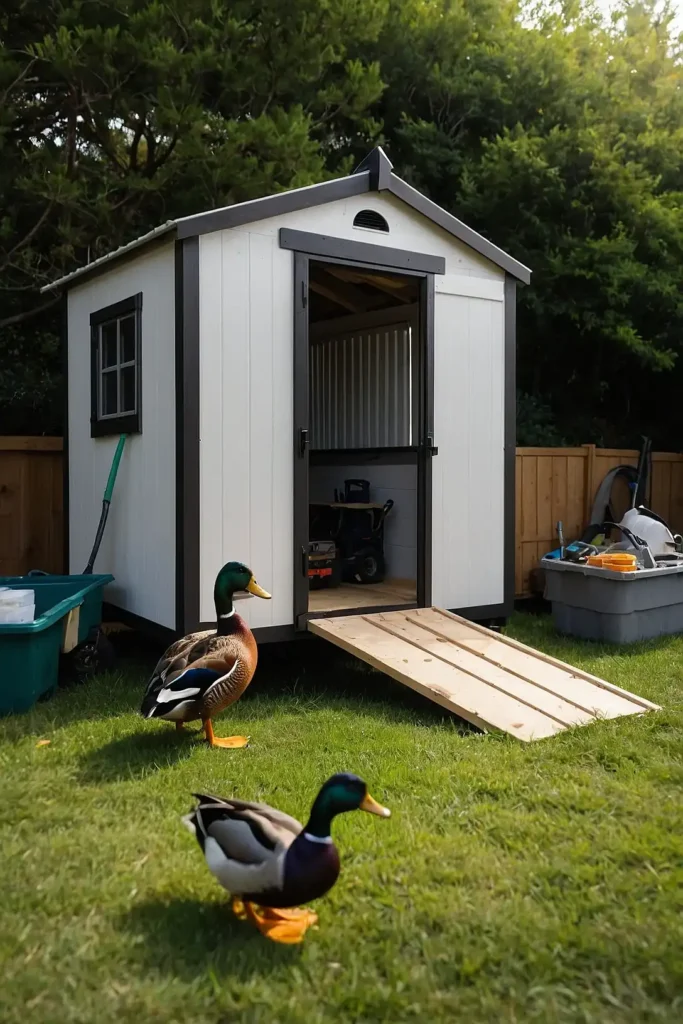
Convert a small storage shed on wheels into a mobile duck enclosure. This approach provides shelter and mobility in one unit.
Remove or modify the existing door for duck access. Add ventilation holes near the roof line for air circulation.
Install removable floor panels for easy cleaning. You can relocate this setup seasonally for fresh ground.
25: Playground Equipment Repurpose
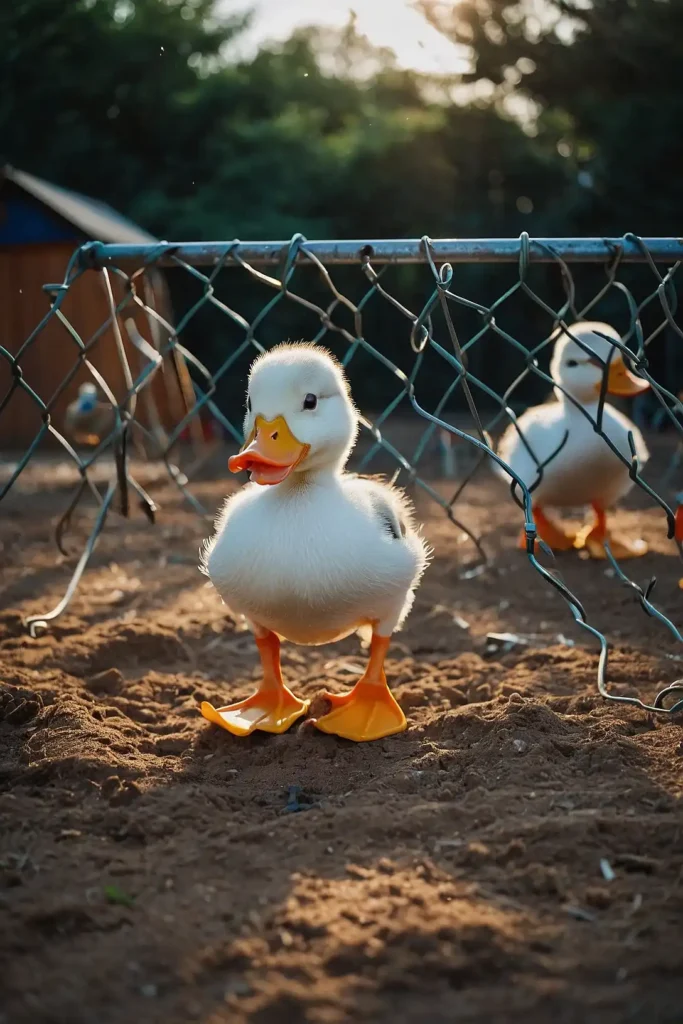
Transform children’s play equipment into an engaging duck enclosure with multiple levels and activities. Swing sets and climbing structures work perfectly.
Remove swings and add ramps or platforms instead. The existing framework provides interesting vertical space.
Cover openings with appropriate mesh for security. Your ducks will enjoy exploring this playground environment.
26: Temporary Pool Enclosure

Set up a quick enclosure around an above-ground pool for swimming access. This seasonal setup provides luxury accommodations for water-loving ducks.
Use portable fencing panels around the pool perimeter. Add a ramp or steps for easy pool entry and exit.
Include shade structures for hot weather protection. This temporary solution works perfectly for summer duck keeping.
27: Multi-Species Habitat
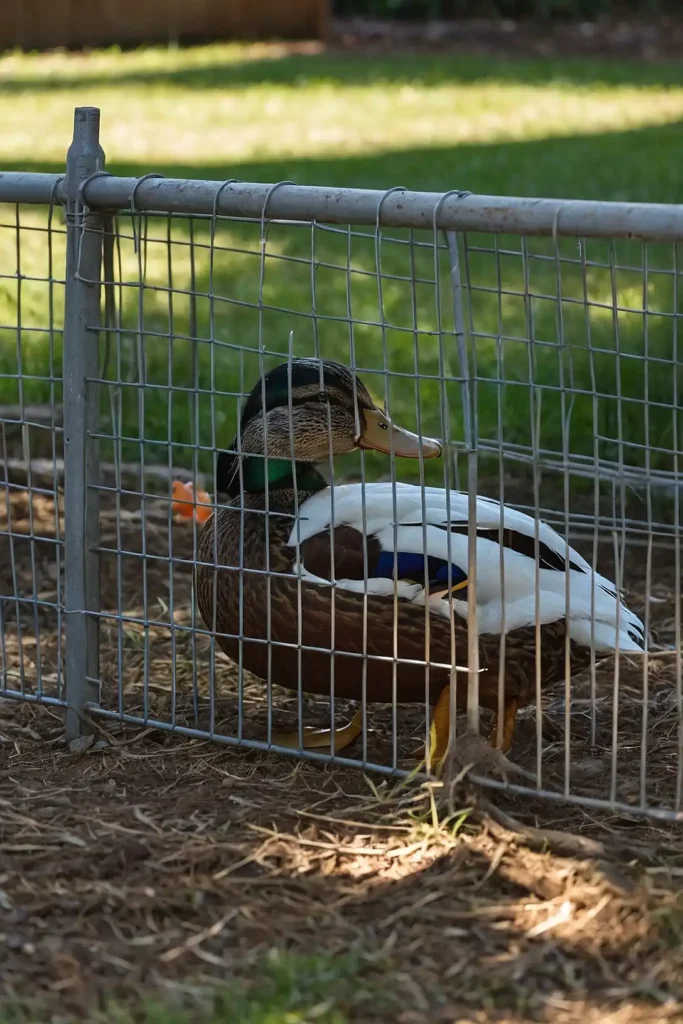
Design an enclosure that accommodates ducks alongside other compatible poultry species. This diverse environment creates natural social dynamics.
Separate areas with removable barriers for species management. Different zones can accommodate varying needs and behaviors.
Provide multiple water sources and feeding stations. This approach maximizes your space while supporting biodiversity.
Conclusion
Building a DIY duck enclosure combines creativity with practicality.
Choose designs that match your skills, budget, and duck needs for the best results.

